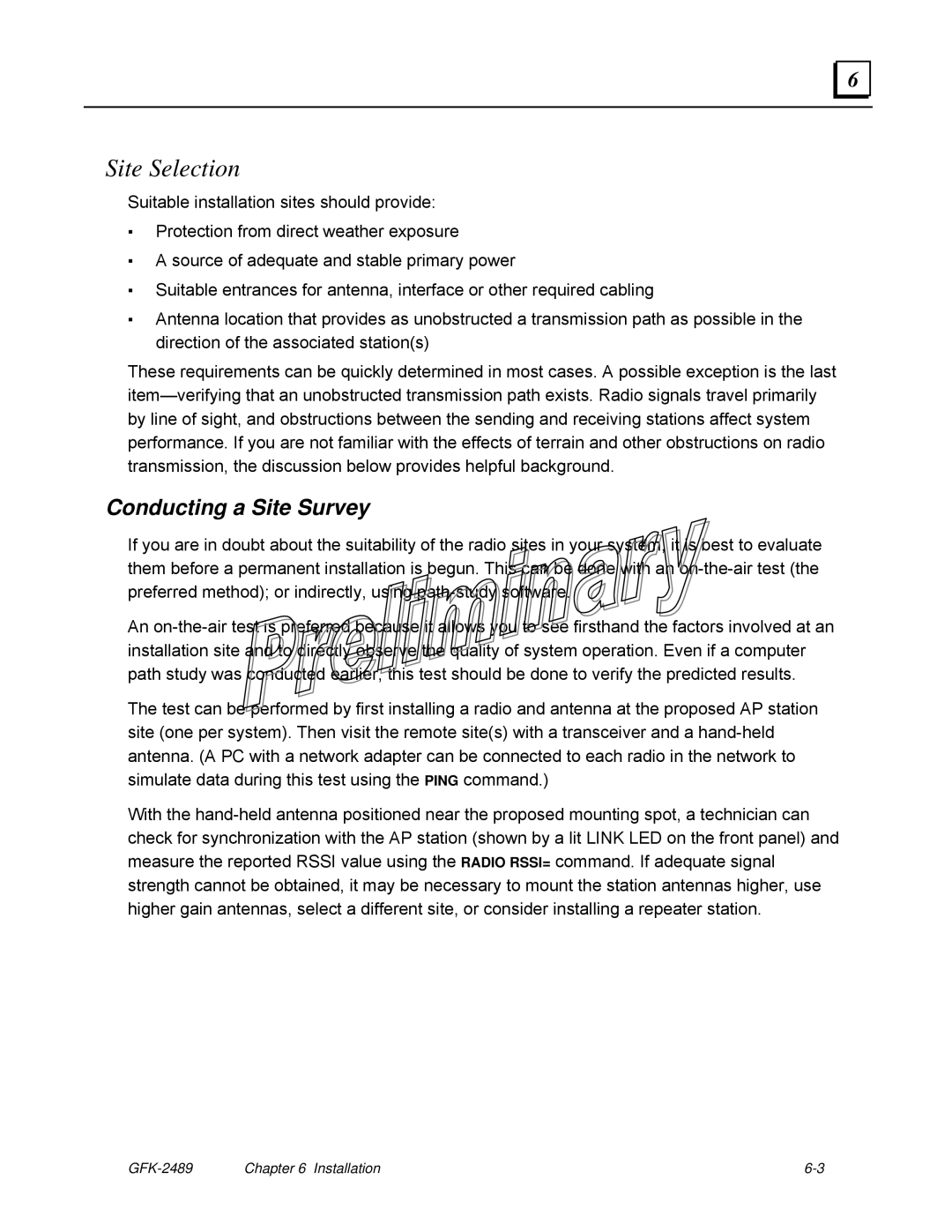Site Selection
Suitable installation sites should provide:
▪Protection from direct weather exposure
▪A source of adequate and stable primary power
▪Suitable entrances for antenna, interface or other required cabling
▪Antenna location that provides as unobstructed a transmission path as possible in the direction of the associated station(s)
These requirements can be quickly determined in most cases. A possible exception is the last item—verifying that an unobstructed transmission path exists. Radio signals travel primarily by line of sight, and obstructions between the sending and receiving stations affect system performance. If you are not familiar with the effects of terrain and other obstructions on radio transmission, the discussion below provides helpful background.
Conducting a Site Survey
If you are in doubt about the suitability of the radio sites in your system, it is best to evaluate them before a permanent installation is begun. This can be done with an on-the-air test (the preferred method); or indirectly, using path-study software.
An on-the-air test is preferred because it allows you to see firsthand the factors involved at an installation site and to directly observe the quality of system operation. Even if a computer path study was conducted earlier, this test should be done to verify the predicted results.
The test can be performed by first installing a radio and antenna at the proposed AP station site (one per system). Then visit the remote site(s) with a transceiver and a hand-held antenna. (A PC with a network adapter can be connected to each radio in the network to simulate data during this test using the PING command.)
With the hand-held antenna positioned near the proposed mounting spot, a technician can check for synchronization with the AP station (shown by a lit LINK LED on the front panel) and measure the reported RSSI value using the RADIO RSSI= command. If adequate signal strength cannot be obtained, it may be necessary to mount the station antennas higher, use higher gain antennas, select a different site, or consider installing a repeater station.
GFK-2489 | Chapter 6 Installation | 6-3 |

